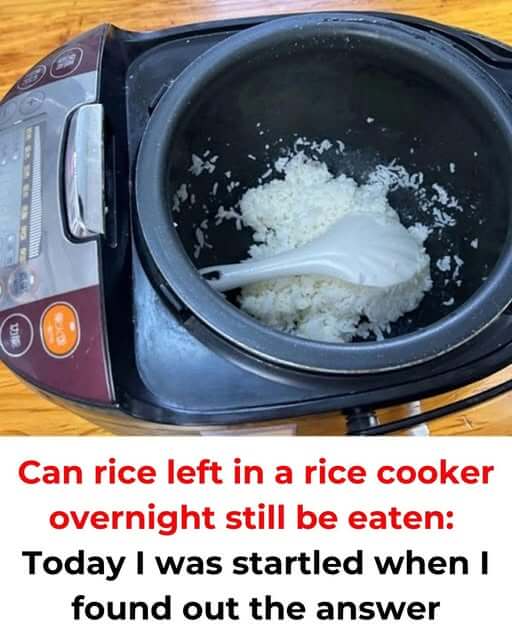If you’ve ever cooked too much rice and left it sitting in the rice cooker overnight, you’ve probably wondered—is it still safe to eat? Experts say the answer depends on how the rice was handled, and it can be broken down into four common situations.
Case 1: The rice stayed untouched in the cooker with the lid sealed shut after cooking. In this case, most bacteria are already destroyed by the heat, and with the lid closed, new bacteria can’t get in. Even though rice has the moisture and nutrients bacteria love, without exposure, it generally won’t spoil overnight.
Case 2: You opened the lid to scoop out some rice while it was still steaming hot, then closed it again. While a few bacteria might sneak in, the remaining high temperature inside usually kills them off. Once the rice cools down, there aren’t enough bacteria left to multiply significantly overnight, making it fairly safe to eat the next day.
Case 3: If you used a clean spoon or scoop to take out rice that’s cooled, and your home environment is clean and well-ventilated, only a small number of bacteria would have touched the rice. After one night, bacterial growth is minimal, so it’s typically fine to eat, though not completely risk-free.
Case 4: You scooped rice with utensils you’ve already eaten from, or the rice was exposed to less clean air, then placed back in the cooker. This is where trouble starts. The moist, warm environment inside the pot creates the perfect breeding ground for bacteria. In hot weather, the risk of spoilage skyrockets, and eating that rice can be unsafe.
The takeaway: Rice left in the cooker with the lid closed is usually safe if untouched or only briefly exposed. But in the last two cases, it’s better not to take chances.
So, how do you store leftover rice properly and avoid wasting food? Experts recommend two simple solutions:
- Soak the cooker in cold water: Keep the rice in the inner pot, then place that pot into a basin filled with cold water that covers about two-thirds of it. Close the lid to keep insects out. This cooling method slows bacterial growth and helps the rice stay fresh longer.
- Refrigerate or freeze it: Once the rice cools down, cover it tightly with plastic wrap and place it in the fridge. During summer, it’s even safer to put the cooled rice in a storage bag and freeze it. For best results, eat leftover rice within 6 hours whenever possible, and always reheat before serving.
Cooking just the right amount of rice is ideal, but if you do end up with extras, these simple storage tricks will keep your rice fresh, safe, and ready to enjoy.
